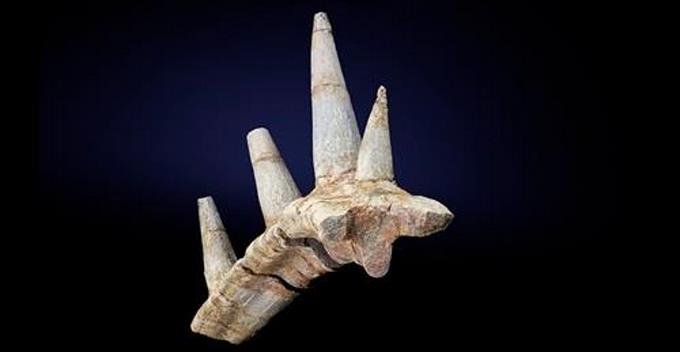Analysis of unusual fossils showing continuous barbs attached to a rib reveals the remains of the oldest ankylosing spondylists ever found and the first on the African continent.
The discovery was made in the central Atlas Mountains of Morocco at the same site where researchers from the NHM (National Museum of History) in the UK discovered the oldest stekosaurus previously discovered.
The new species was described by Dr. Susanna Maidment, an NHM researcher at the University of Birmingham and a senior lecturer, and named it Spicomellus afar: Spicomellus means “spiked collar” and Offer “from Africa”.
“At first we thought this model might be part of a sticosaurus, which we had previously discovered in the same place. But upon closer inspection, we realized that the image was different than anything we had ever seen,” he said. Report
This model is so unusual that researchers initially wondered if it was a fake. CT scans showed that this was the actual contract, and showed a cross-hatch pattern on the cross-sectional bone at the base of the specimen, which revealed the identity.
“Ankylosing spondylitis consists of thorns, which are usually embedded in the skin and not attached to the bone. In this model we see continuous barbs attached to the ribs, which are covered with a keratin-like layer above the skin,” the maid explained. “This is unprecedented and unprecedented in the animal kingdom.”
Ankylosing spondylitis is a diverse group of armored dinosaurs associated with the most popular sticosores. They existed throughout the Cretaceous period, but before that there was little evidence that not only was this new fossil first discovered in Africa, but it also produced the first example of a group ever discovered.
The new invention dates back to the Middle Jurassic, about 168 million years ago. This helped fill an important gap in our understanding of dinosaur evolution and suggests that anclosures may have a global distribution.
This discovery challenges the earlier theory that ankylosing spondylitis was more prevalent than stigmas and led to their extinction. This new discovery, however, suggests that the two groups lived together for more than 20 million years, and that the extinction of stegosaurus may have occurred for other reasons.
The fossil that led to the description of these new organisms is now part of the NHM collection and will continue to be explored. This study has been published in the journal Nature Ecology & Evolution.



:format(jpeg):focal(1113x968:1123x958)/cloudfront-us-east-1.images.arcpublishing.com/gfrmedia/5R6TJPXX3BCBTAMAPEFV7AZ7FQ.jpg)

:quality(85)/cloudfront-us-east-1.images.arcpublishing.com/infobae/JOTNHIC4TZASXLYZIYQNOJVENA.png)